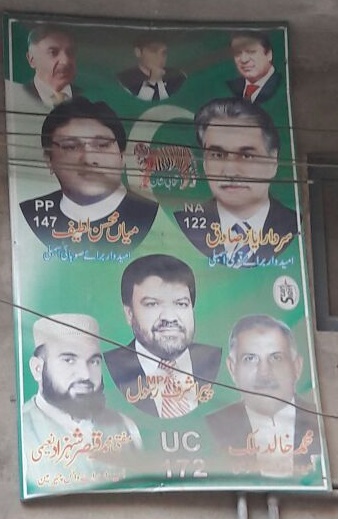A central feature of democracy is that political parties aggregate citizen voice, and transform it into political mandates and programmatic policies when they form governments. Political parties are thus a central channel for making citizens’ voices count towards policies.
The effectiveness with which political parties aggregate voice and how responsive policies are to the preferences expressed by their voter bases are important metrics for the strength of democracy. Recent experiences across the globe have cast doubt on how effectively these two aspects of democracy are working.
In the UK, for example, the Brexit vote revealed how disconnected party elites were from their voter bases. It also showed a widening gap between the policies that parties adopt and the preferences of their voter bases and party members. The resulting crisis of legitimacy of political party elites has emerged as an important point of discussion in western democracy.
In spite of the growing recognition of this issue in established democracies, there is little work on how well voice aggregation and policy responsiveness is working in emerging democracies. At the heart of this are the questions of how parties organise to aggregate voice, and what mechanisms ensure that this voice is reflected in policy formulation. Our research – Politics, Voice and Responsiveness in urban Pakistan – is looking at these questions.
Clientelism and citizen voice aggregation
Data from the Polity IV project shows that over the past thirty years there has been a dramatic spread of elected governments at the national and local levels. Evidence also suggests that national elections are fairly competitive in many emerging democracies. However, many democracies continue to struggle with weak party organisations at the local level. The existing evidence points to the prevalence of personalised machines of dynastic families and ethnic mobilisations, which weaken formal party structures.
How does citizen voice aggregation happen in this context? The standard answer in the literature is clientelism, particularly strong in communities where caste, ethnic and / or kinship networks underpin collective or group voting. Through clientelism, services are delivered as quid pro quo arrangements between voters and electoral candidates. Voters make specific demands – for cash, or jobs, or a functional health centre in the neighbourhood – and politicians deliver these as best as they can, but only specifically in exchange for a vote. This provides strong incentives for targeted delivery of public services on a partisan basis rather than programmatic policy formulation that is likely to benefit both party and opposition voters.
Clientelist voter-politician interactions depend on reciprocity – both sides must deliver on their promise for the exchange to be complete – and on the ability of voters to aggregate their preferences. The clientelism literature suggests that it works effectively when voter-politician interactions are embedded in social networks, which are conducive to both reciprocity and aggregation. These networks provide information on whether voters who benefitted from politician delivery actually held to their side of the bargain and cast their vote for the politician in question. They also discipline the politician if the good that is contracted fails to be delivered after the elections.
What does citizen voice aggregation in Lahore look like?
However, little is known about the form actually taken by citizen voice aggregation in the megacities of emerging democracies, or how effectively it works there.
Our research explores these issues in non-elite neighbourhoods in the Pakistani mega-city of Lahore, home to around 10 million people. The country made the transition from military rule to democracy in 2008, and Lahore’s politics is dominated by the ruling party, the PML-N. But a new political party - the PTI - has gained ground, and provided competition for the PML-N in 2013.

Local and party leaders on an election poster in Lahore during Pakistan's most recent local government election
Many of our findings challenge the typical description of clientelism as citizen voice aggregation. Of those in our representative sample of 2000 adult respondents who voted in the last general election, the majority didn’t vote on the basis of ethnic, kinship or caste-based collective action. Instead, 54% of them report taking the voting decision independently or in consultation with their immediate family. Only 14% consulted with the forms of networks typically associated with clientelist exchange. In short, the group voting that is hypothesised to underpin clientelist exchange doesn’t appear to be prevalent in Lahore.
So how does the process of citizen voice aggregation work in this context? At the heart of the process are machines of political party constituency leaders that work through large networks of party workers. The evidence from our research suggests that the intensity of political party-citizen contact is much higher at the time of elections than after it. Thirty percent of our respondents reported having been in contact with a party worker at the time of elections, but only 10% afterwards. And an even smaller proportion reports having been in contact to express their needs for the purposes of planning public investment.
This presents a picture where party machines do exist at the local level, but do not serve as effective citizen voice aggregators. They function instead simply as the mechanism through which votes are aggregated at the time of elections. The connection between local party workers and citizens is weak after the election when programmes and public investment are typically planned and executed.
Local party workers – key to understanding responsiveness?
To understand whether policy formulation and the planning of public investment is responsive to all voices, it is important to understand what determines the motivation and incentives of local party workers.
It is also important to understand which voters they are responsive to, what considerations apart from voter preferences drive their behaviour, and how effective they are in influencing the choice of constituency leaders.
We are currently analysing our data on these questions from our sample, who are located in four out of twenty-five provincial legislative seats of Lahore. We will be sharing all our research results very soon.